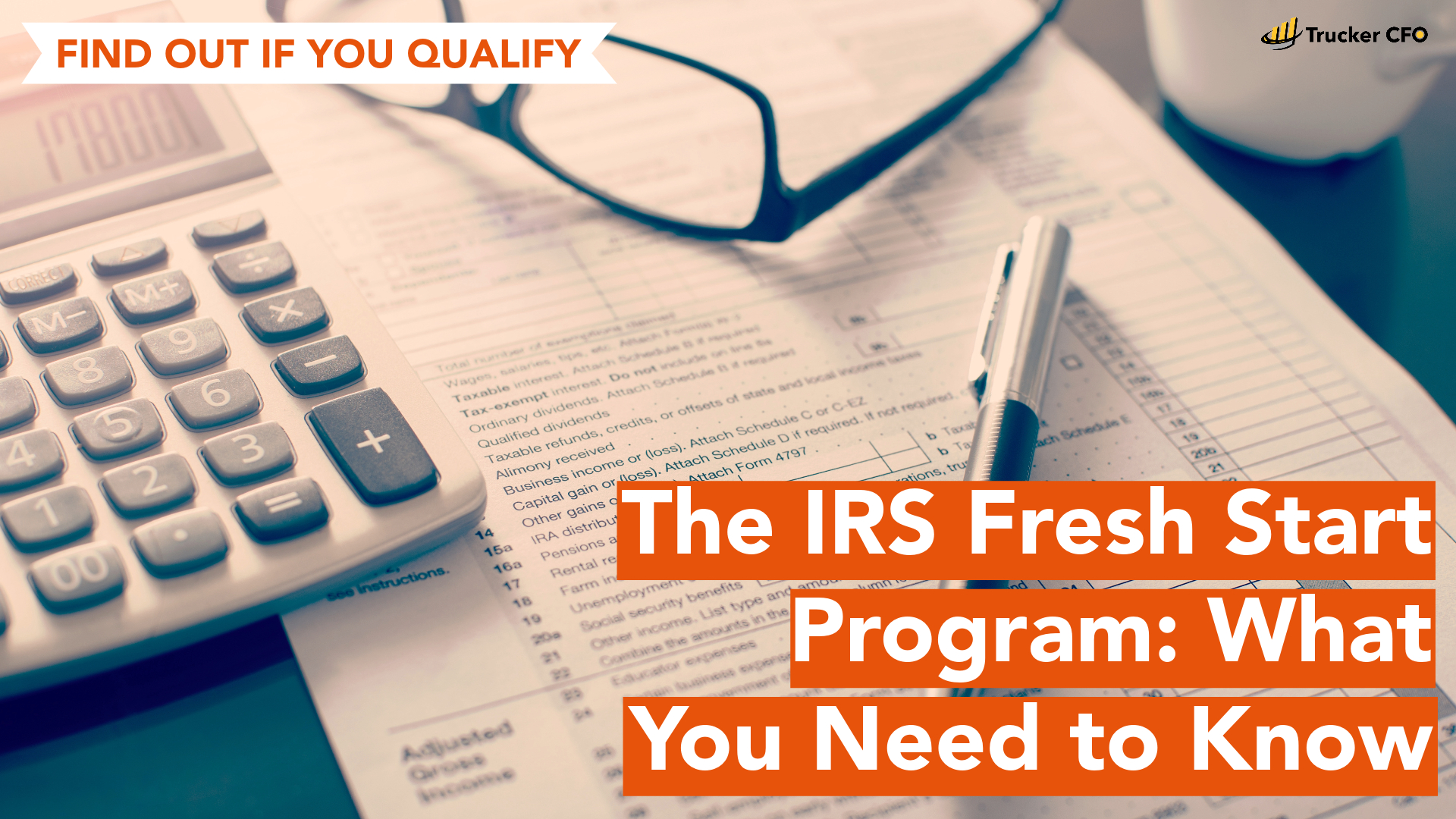
The IRS Fresh Start Program has been a lifeline for countless taxpayers struggling with tax debt. While it may sound like a beacon of hope, it’s essential to understand that this program isn’t a magic wand that wipes away your tax troubles. In this blog, we’ll dive into the details of the Program, highlighting its history, qualification criteria, strict requirements, and dispelling the myth that you can simply ask the IRS to reduce your tax liability.
The History of the IRS Fresh Start Program
The IRS Fresh Start Program was introduced in 2008 as a response to the financial crisis, aiming to assist individuals and small businesses facing difficulties paying their tax obligations. It was expanded and improved upon in subsequent years to provide more comprehensive relief options for taxpayers.
Potential benefits of the Program include:
- Prevention of lien being filed against a tax payer
- In some cases, removal of a tax lien that has already been placed
- Reduction in penalties and interest on penalty
Qualification Isn’t Guaranteed
While the Fresh Start Program offers valuable assistance, it’s important to realize that not everyone will qualify for its benefits. The IRS evaluates each case individually to determine eligibility based on specific criteria. The program primarily targets taxpayers who genuinely face financial hardship and are struggling to meet their tax obligations. There are other tax resolution options for those who don’t qualify, but the IRS Fresh Start Program is great for those who are unable to pay in full what they owe.
Requirements
The IRS Fresh Start Program comes with strict requirements and guidelines that must be met to qualify for relief. Some of the key requirements include:
- You must have filed all required tax returns for the previous three years
- You must owe a significant tax debt
- You must agree to pay your taxes owed within six years
- You must have made all required estimated tax payments for the current year
- You must not have been involved in any tax evasion or fraud activities
- You must demonstrate financial hardship
- You must commit to staying current with future tax obligations, including making timely tax payments and filing returns when due
No Simple Negotiation
One common misconception about the Fresh Start Program is that you can negotiate your tax liability down with the IRS. In reality, the IRS evaluates your financial situation and offers relief options based on a predefined set of criteria. These options may include installment agreements, offers in compromise, and penalty abatement, among others. The IRS determines the specific relief you qualify for, and it’s not a matter of negotiation where you can simply ask for a reduced tax liability.
Installment Agreements
The IRS Fresh Start program offers several payment plans to help taxpayers pay off their taxes. There are two main types:
- Streamline Installment Plans
- Partial Pay Installment Plans
Streamline Installment Plans are long-term payment plans that allow taxpayers to pay their taxes over a period of time, usually up to 72 months, or, in some cases, 84 months. Partial Installment Plans allow taxpayers to make smaller payments over time while the interest and penalties accrue. In some instances, the tax debt could be reduced significantly by utilizing the statute of limitations. The statute of limitations is the expiration date of the debt and we can sometimes use this limitation by getting you a low enough payment while allowing a portion of the debt to expire.
To qualify for a short-term payment plan, you must owe less than $100,000 in combined tax, penalties, and interest.
To qualify for a long-term payment plan, you must owe $50,000 or less in combined tax, penalties, and interest.
When the tax debt over $100,000.00, getting a monthly payment or resolution in place is more difficult, which makes proper representation all the more important to ensure the best possible outcome.
Offer in Compromise
If you can’t afford a payment plan, you may be eligible for an Offer in Compromise. An Offer in Compromise allows you to settle your tax debt for less than the full amount you owe. To qualify, you must prove that you can’t pay your taxes and that paying the full amount would create a financial hardship. The IRS will consider your income, expenses, and assets to determine if you qualify. If you qualify, you may be required to submit a non-refundable deposit. The deposit is usually 20% of the offer amount. For example, if you offer to pay $20,000 to settle your tax debt, you would be required to submit a $4,000 deposit.
Penalty Abatement
Unpaid taxes continue to accrue penalties and interest until a resolution is established with the IRS. Penalty abatement allows you to have certain penalties waived. There are a variety of different types, including First Time Penalty Abatement, Reasonable Cause Penalty Abatement, Undue Hardship Waiver, and others.
Your Fresh Start
The first step in applying for the IRS Fresh Start program is to contact your accountant and see if you qualify. The IRS Fresh Start Program has been a helpful resource for many taxpayers facing tax debt challenges. However, it’s not a one-size-fits-all solution, and qualification is not guaranteed. Strict requirements, eligibility criteria, and the absence of simple negotiation highlight the importance of seeking professional guidance when dealing with tax debt issues. If you’re struggling with tax debt, it’s advisable to consult with a tax professional who can help you navigate the complexities of the IRS Fresh Start Program and explore the best options for your unique situation. We will work with you to complete the necessary paperwork and help you submit it to the IRS, and then help you keep track of your progress and ensure that you stay on track to successfully complete the program.

